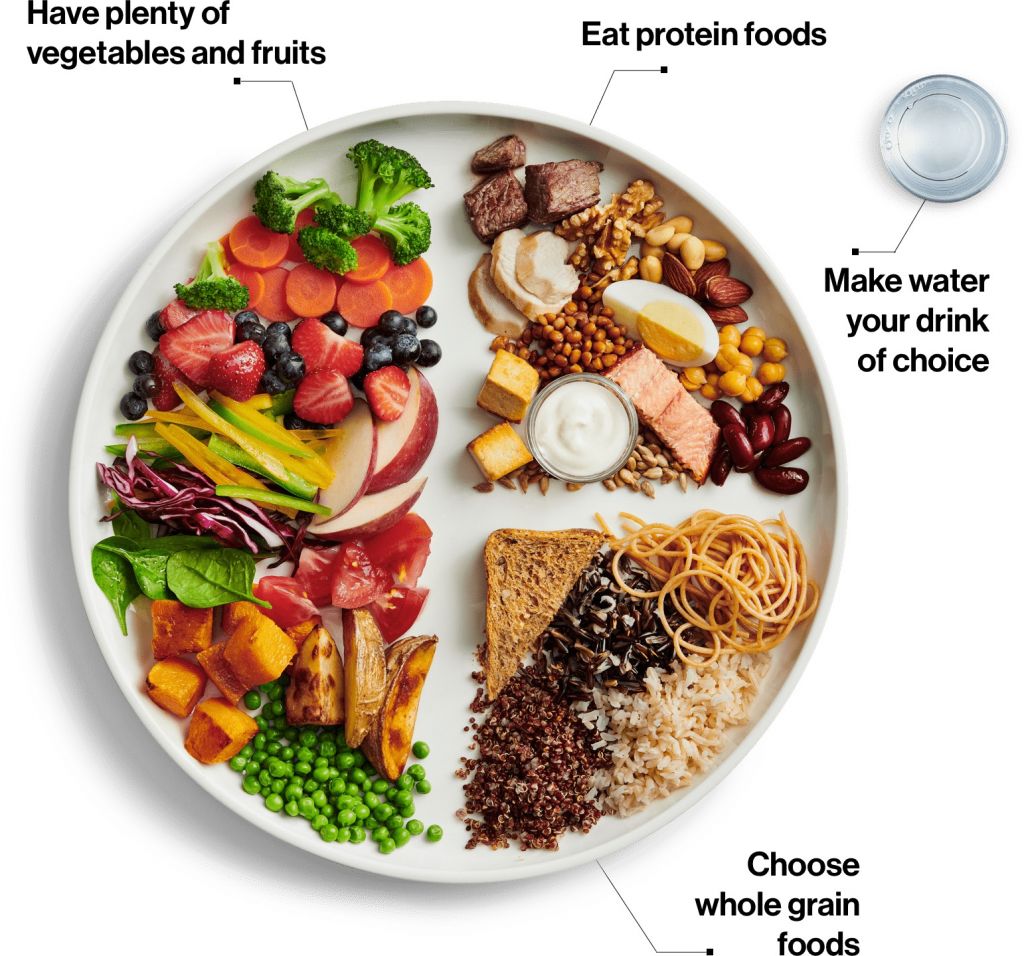Have you seen the new Canada Food Guide?
The new version includes some significant changes since its last update in 2007. Gone are the four traditional food groups. They’ve been replaced by fruit, vegetables, whole grains, and proteins. The accompanying image shows a white plate in which roughly half is filled with fruit and vegetables, while the other half includes whole grains and proteins. You’ll even spot some tofu on that plate.
So apart from the obvious, what are the biggest differences between the previous food guide and the 2019 version?
Reduced Emphasis on Meat and Dairy
Dairy products no longer feature as a separate food group, and meat also plays a less significant role in the new food guide. Proteins now include both dairy and meat as well as plant-based proteins, such as legumes, nuts and tofu. As the guide suggests, “Choose protein foods that come from plants more often. Plant-based protein foods can provide more fibre and less saturated fat than other types of protein foods. This can be beneficial for your heart health.”
Water is the Beverage of Choice
The previous food guide included a serving of 100% fruit juice as a suitable equivalent to a serving of fruit. That recommendation has been removed from the new food guide and drinking water is encouraged.
Reducing alcohol consumption is also encouraged. The guidelines recommend “no more than two drinks a day, 10 per week for women, and three drinks a day, 15 per week for men, with an extra drink allowed on special occasions.”
Other healthy beverage choices include:
- White milk (unsweetened lower fat milk)
- Unsweetened fortified plant-based beverages such as:
- Soy beverage
- Almond beverage
- Unsweetened coffee and teas
No More Numbers
While the previous food guide included a daily number of recommended servings per food group, the new guide has a more holistic approach, recommending that our diets consist of roughly half fruits and vegetables and the rest whole grains and protein. The updated food guide suggests a more mindful approach to eating. It encourages listening to your body’s cues and choosing the right foods to stay satiated for longer periods.
Healthier Eating Habits
The updated food guide recommends that we develop healthy eating habits, cooking more, enjoying food (trying cultural foods), and eating with others. Sharing meals with others is particularly emphasized. According to the new food guide, eating alone or separately from others in the home can create a sense of isolation or loneliness. The benefits of eating together as a family helps our children:
- Explore new healthy foods
- Establish healthy eating routines
- Improve their overall eating pattern
Another of the healthy habit recommendations is to choose foods that reflect different cultures and food traditions. According to the guide, this can help you:
- Choose foods that you enjoy
- Grow your skills and knowledge
- Learn about cultures and food traditions
- Create a sense of community and foster connections
- Keep your cultural roots and food traditions alive by sharing them across generations and with others.
Overall, the updated food guide is a comprehensive nutritional guide including categories on food choices (including what to limit or avoid – most notably processed foods), eating habits, recipes, tips (including meal planning, budgeting, healthy snacking, food safety and other strategies for healthier eating), and resources.
If you have any questions about your daily nutritional needs, our pharmacists can assist you in making sense of the new Food Guide recommendations. Visit us at any of our locations and speak to our in-store nutritional experts.




